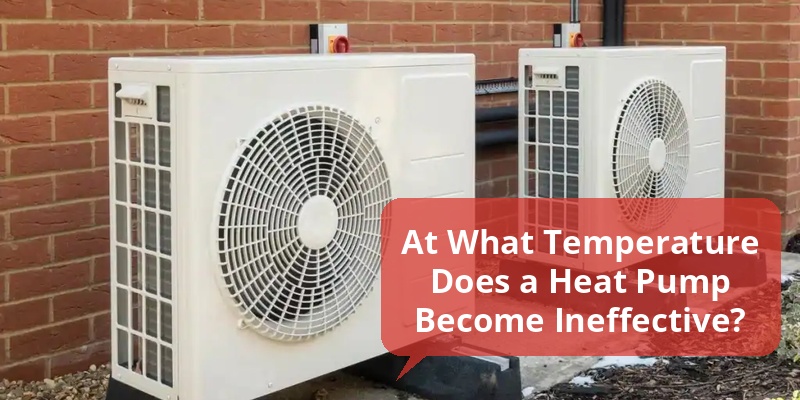Heat pumps are a popular and energy-efficient solution for heating and cooling homes across the United States. However, their performance is closely tied to outdoor temperatures, raising the question: at what temperature does a heat pump become useless? This article explores the operating limits of heat pumps, how temperature affects their efficiency, and what homeowners can expect during extreme cold weather conditions.
| Temperature Range (°F) | Heat Pump Performance | Recommended Action |
|---|---|---|
| Above 40°F | Highly efficient heating and cooling | Primary heating source |
| 20°F – 40°F | Moderate efficiency, reduced capacity | Use supplemental heating if needed |
| Below 20°F | Significant loss of heating efficiency | Supplemental or alternative heat required |
| Below 0°F | Limited efficiency; operation often impractical | Backup heating systems essential |
How Heat Pumps Work and Their Temperature Limits
A heat pump transfers heat between indoors and outdoors using refrigerant cycles. In heating mode, it extracts heat from outdoor air—even when it’s cold—and delivers it inside. This process depends on the temperature differential, and its efficiency decreases as outdoor temperatures drop.
Most modern heat pumps operate efficiently down to around 25°F to 30°F. Below this, the system struggles to extract sufficient heat, causing it to work harder and consume more energy. Some advanced cold-climate heat pumps can perform efficiently near 0°F but still have practical limits.
Factors Affecting Heat Pump Performance at Low Temperatures
1. Heat Pump Type
There are primarily two types: air-source and ground-source (geothermal) heat pumps.
- Air-source heat pumps rely on outdoor air temperatures and are sensitive to extreme cold.
- Ground-source heat pumps use stable underground temperatures and maintain efficiency even in harsh winters but come with higher installation costs.
2. Refrigerant Technology
Modern refrigerants and inverter-driven compressors improve low-temperature heating performance. Heat pumps using advanced refrigerants like R-32 or R-410A maintain efficiency at lower temperatures than older models.
3. Defrost Cycles and Maintenance
Cold, moist weather causes frost buildup on outdoor coils, temporarily reducing efficiency. Proper defrost cycles and maintenance help restore performance and prevent failure.
When Does a Heat Pump Become Ineffective?
Below approximately 20°F, most traditional air-source heat pumps experience significant efficiency drops. At temperatures below 0°F, many models struggle to maintain comfortable indoor heating on their own. This is often when additional heating systems, like electric resistance heaters or gas furnaces, become critical.
Cold-climate heat pumps can extend efficient operation close to 0°F; however, depending on location, the system is typically paired with backup heating for reliability.
Signs Your Heat Pump Is Struggling in Cold Weather
- Longer running cycles with little warm air output
- Rising electric bills indicating increased energy use
- Unusual noises from the compressor or defrost cycle
- Inconsistent indoor temperatures
Backup Heating Options for Extreme Cold
To maintain comfort below a heat pump’s optimal temperature range, homeowners often rely on:
- Electric resistance heaters: Provide instant heat but at a higher cost.
- Gas or propane furnaces: Efficient for very cold climates and can act as a primary or emergency heat source.
- Dual-fuel systems: Combine heat pumps with furnaces to optimize efficiency throughout the winter.
Improving Heat Pump Efficiency in Cold Climates
Homeowners can enhance heat pump performance and reduce the risk of efficiency loss during cold weather:
- Choose a cold-climate heat pump model designed for subzero temperatures
- Ensure proper insulation and weather sealing to minimize indoor heat loss
- Schedule regular maintenance including coil cleaning and refrigerant checks
- Install a programmable thermostat to optimize heating schedules
- Use supplemental heating sources wisely to support the system
Summary Table: Heat Pump Efficiency by Temperature Range
| Temperature Range (°F) | Efficiency Level | Operational Notes |
|---|---|---|
| Above 40 | High (COP 3.5 – 4.5) | Primary heat source with excellent efficiency |
| 30 – 40 | Moderate to high (COP 2.5 – 3.5) | Continues efficient operation, minor capacity decrease |
| 20 – 30 | Moderate (COP ~2.0) | Performance declines, may require supplemental heat |
| 0 – 20 | Low (COP < 1.5) | Efficiency significantly reduced, backup heat recommended |
| Below 0 | Very low (COP < 1.0) | Often impractical alone, must rely on alternative heat |
